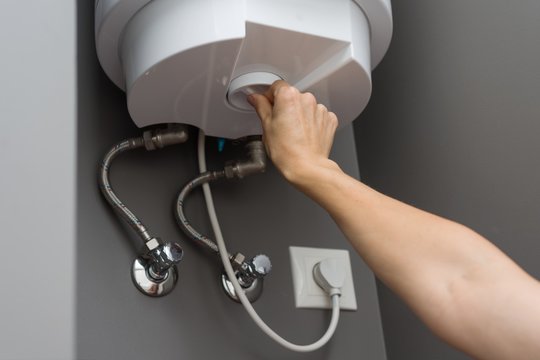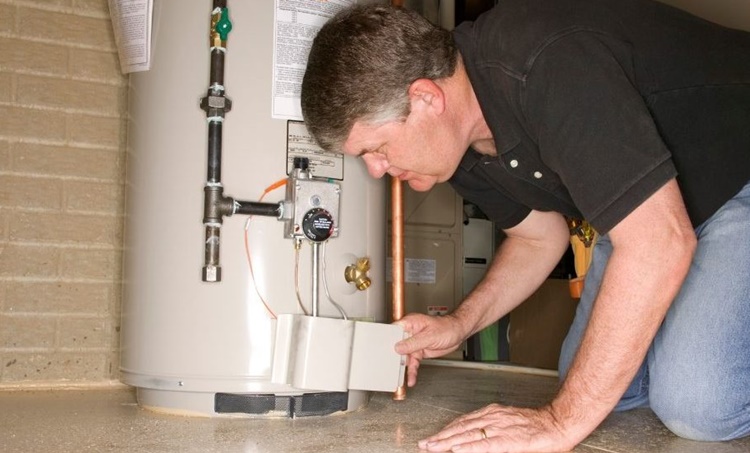Best Ways to Maintain Your Home's Hot Water System Successfully
Best Ways to Maintain Your Home's Hot Water System Successfully
Blog Article
Have you been trying to find help concerning Tips on Maintaining a Water Heater?

Hot water is necessary for daily convenience, whether it's for a revitalizing shower or washing recipes. To ensure your hot water system runs effectively and lasts much longer, normal maintenance is crucial. This article offers sensible tips and understandings on just how to maintain your home's hot water system to stay clear of disruptions and costly repair services.
Intro
Keeping your home's hot water system could appear daunting, but with a few simple steps, you can ensure it runs efficiently for several years ahead. This overview covers every little thing from recognizing your warm water system to do it yourself upkeep ideas and understanding when to contact expert assistance.
Significance of Keeping Your Warm Water System
Routine maintenance not only extends the life-span of your warm water system yet likewise ensures it operates efficiently. Neglecting upkeep can bring about reduced effectiveness, higher power costs, and even early failing of the system.
Indications Your Hot Water System Needs Upkeep
Recognizing when your hot water system needs focus can protect against significant issues. Look out for indicators such as irregular water temperature, strange sounds from the heating unit, or rusty water.
Purging the Hot Water Heater
Flushing your water heater gets rid of sediment buildup, boosting effectiveness and prolonging its life.
Monitoring and Replacing Anode Rods
Anode rods prevent deterioration inside the storage tank. Inspecting and changing them when worn out is vital.
Complex Problems Calling For Professional Aid
Examples include significant leaks, electrical troubles, or if your water heater is constantly underperforming.
Regular Professional Maintenance Conveniences
Professional maintenance can consist of thorough assessments, tune-ups, and making certain compliance with security criteria.
Evaluating and Adjusting Temperature Level Setups
Readjusting the temperature settings makes sure optimum performance and safety.
DIY Tips for Maintenance
You can perform several maintenance tasks on your own to maintain your warm water system in leading problem.
Checking for Leaks
On a regular basis evaluate pipes and connections for leaks, as these can bring about water damage and higher expenses.
Comprehending Your Warm Water System
Prior to diving right into upkeep jobs, it's practical to recognize the standard parts of your hot water system. Generally, this includes the water heater itself, pipes, anode rods, and temperature controls.
Regular Monthly Maintenance Tasks
Routine regular monthly checks can assist capture small problems before they intensify.
Evaluating Pressure Alleviation Valves
Checking the pressure relief valve guarantees it works correctly and prevents too much stress buildup.
Insulating Pipelines
Protecting hot water pipelines minimizes heat loss and can conserve energy.
When to Call a Professional
While do it yourself upkeep is advantageous, some concerns need professional know-how.
Final thought
Regular upkeep of your home's hot water system is crucial for effectiveness, longevity, and price savings. By adhering to these ideas and knowing when to look for professional aid, you can guarantee a reliable supply of warm water without unexpected disturbances.
Water Heater Maintenance: The Basics
Maintaining your water heater will ensure it operates efficiently and has a longer lifespan. Neglecting regular maintenance can lead to costly repairs and an even bigger chunk of your savings if you have to replace it sooner than necessary. But there’s good news: Most water heater maintenance tasks are relatively simple and easy for homeowners with basic DIY skills.
Flush the Water Heater
Over time, sediment and minerals can build up in the tank, reducing its efficiency and potentially causing damage. To flush the tank, turn off the power or gas supply, attach a hose to the drain valve near the bottom and open the valve to drain the water until it runs clear. Ideally, flush the tank annually.
Replace the Anode Rod
The anode rod is a sacrificial metal rod that helps prevent corrosion inside the tank. Inspect and replace it every three to five years or per the manufacturer's recommendation. To replace the anode rod, turn off the power or gas supply, drain a few gallons of water from the tank, unscrew the old rod and replace it with a new one. If the anode rod is significantly corroded or covered in calcium buildup, it's a sign the water heater may need to be replaced soon.
Tune-Up
A yearly tune-up can help identify potential issues and ensure your water heater operates at peak efficiency. This typically involves checking the thermostat, burner assembly (for gas heaters) and any other components specified by the manufacturer. During a tune-up, the technician may also clean the burner and adjust the pilot light (for gas heaters) or examine the heating elements (for electric heaters).
How to Maintain Your Water Heater
Insulate the tank. Insulating the tank can improve energy efficiency and reduce heat loss, saving you money on energy bills. You can purchase precut insulation blankets designed specifically for water heaters or use standard fiberglass insulation wrapped securely around the tank. Check the temperature. The recommended water temperature for most households is around 120 degrees Fahrenheit (49 degrees Celsius). Higher temperatures can increase energy costs and potentially cause scalding. Use a kitchen thermometer to check the temperature at the faucet nearest the water heater. Monitor water pressure. Excessive water pressure can strain the water heater and cause leaks or even tank failure. Install a pressure-reducing valve if necessary. The ideal water pressure range is between 60 and 70 PSI (pounds per square inch). Test the temperature and pressure (T&P) relief valve. The T&P relief valve is a safety feature that releases pressure if the tank gets too hot or the pressure builds up too high. Test it annually by lifting the lever and allowing a small amount of water to release. Replace the valve if it doesn't release water or reseal properly. Check for leaks. Regularly inspect the tank, pipes and fittings for leaks or corrosion. Deal with issues promptly to prevent further damage. Even a small leak can lead to significant water damage over time. Consider a tankless water heater. If your traditional tank-style water heater is nearing the end of its lifespan ( typically 10 years), consider replacing it with a tankless water heater. These units heat water on demand, reducing standby energy losses and potentially saving you money on your energy bills. Schedule professional maintenance. While homeowners can perform many water heater maintenance tasks, it's still a good idea to schedule professional maintenance every few years. A plumber or HVAC technician can thoroughly inspect the unit, identify potential issues and ensure it operates safely and efficiently. https://www.homeserve.com/en-us/blog/home-improvement/hot-water-heater-maintanence/

Do you enjoy reading about How to Maintain Your Water Heater & Prolong its Life? Write a remark directly below. We would be happy to know your insights about this piece. We are looking forward to see you back again later on. Be sure to pause to distribute this content if you enjoyed reading it. I praise you for your time. Don't forget to come by our site back soon.
Booking Report this page